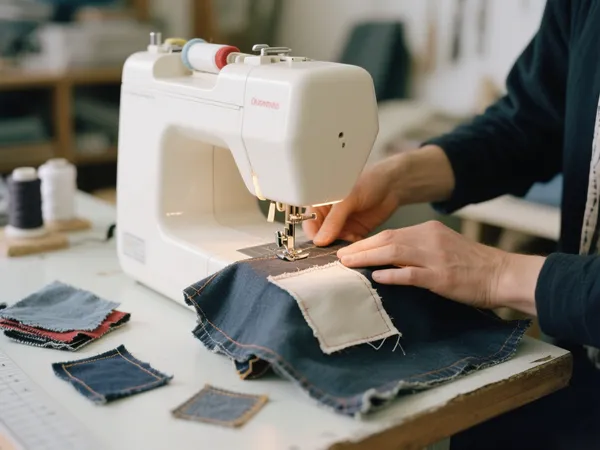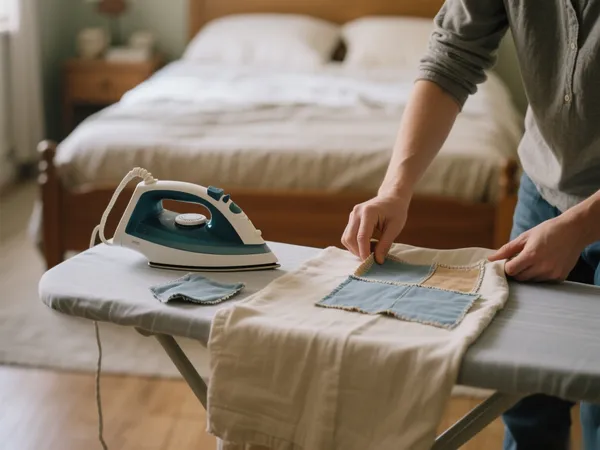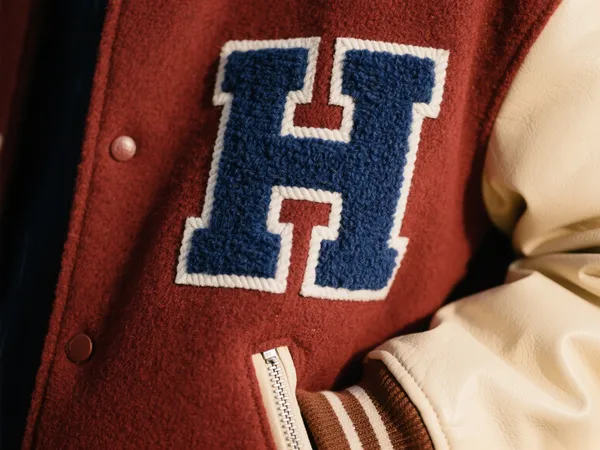عندما يتعلق الأمر بتخصيص ملابسك أو حقائبك أو زيّك الرسمي أو إكسسواراتك، تُعدّ الرقع وسيلة سهلة ومبتكرة لإضفاء لمسة مميزة. لكن هناك سؤال رئيسي يقف عائقًا أمام العديد من محبي الأعمال اليدوية والمحترفين على حد سواء: رقعة الكي مقابل رقعة الخياطة - أيهما أفضل؟
لكلٍّ من الرقع التي تُكوى وتُخاط أغراضها الخاصة، ويعتمد الاختيار المناسب على نوع القماش، واحتياجات الاستخدام، والتفضيلات الشخصية. في هذا الدليل، سنستكشف إيجابيات وسلبيات كلٍّ منهما، وأفضل سيناريوهات الاستخدام، وكيفية تطبيقها بشكل صحيح.

فهم الأساسيات: ما هي الرقع التي يتم كيها والرقع التي يتم خياطتها؟
رقعة المكواة يأتي مع لاصق حراري على ظهره. عند وضعه بمكواة أو مكبس حراري، يذوب الغراء ويلتصق بالقماش، مكونًا رابطة شبه دائمة.
Sew-on patchesمن ناحية أخرى، تُخاط الأقمشة القطنية على القماش إما يدويًا أو آليًا. لا تحتوي على أي دعامة لاصقة، وتعتمد كليًا على الخيط لتثبيتها في مكانها.

مزايا رقعة الكي
1. تطبيق سريع وسهل
الميزة الأكثر أهمية لـ iron on patches تتميز بسرعة وسهولة تطبيقها. كل ما تحتاجه هو مكواة منزلية وقطعة قماش للكي. هذا يجعلها مثالية لـ:
- المبتدئين الذين لديهم مهارات خياطة قليلة أو معدومة
- التطبيقات الحساسة للوقت
- الاستخدام المؤقت على الأقمشة غير القابلة للتمدد
2. مظهر نظيف بأقل جهد
بفضل عدم وجود غرز مرئية (ما لم تختر الخياطة فوقها لمزيد من المتانة)، توفر الرقع التي يتم كيها لمسة نهائية مصقولة، خاصة لأغراض الموضة أو الديكور.
3. رائع للارتداء من الخفيف إلى المتوسط
تعتبر الرقع التي يتم كيها مثالية للأشياء التي لا تتعرض للاحتكاك الشديد أو الغسيل المتكرر، مثل حقائب التسوق، والسترات الجينز، والوسائد المزخرفة.

قيود رقعة الكي
على الرغم من سهولة الاستخدام، رقعة الكي لديها عيوب:
- مخاوف بشأن المتانة:قد يتراخى اللاصق بعد غسله عدة مرات أو عند وضعه على الأقمشة المطاطة.
- غير مثالي لجميع المواد:قد لا تلتصق الأقمشة الاصطناعية أو المواد المقاومة للماء جيدًا بالمادة اللاصقة.
من أجل عمر أطول، يستخدم العديد من المستخدمين قم بالكي ثم قم بالخياطة حول الحواف، الجمع بين الطريقتين.
متانة رقعة الخياطة
1. ثبات قوي وطويل الأمد
إذا كنت تبحث عن المتانة، sew on patches هي الفائزة بلا منازع. فهي مثبتة بإحكام بخيط، وتتحمل:
- الغسيل والتجفيف المتكرر
- الاستخدام الشاق على ملابس العمل أو حقائب الظهر
- الحركة والتمدد في الملابس الرياضية
2. مزيد من تنوع المواد
تُناسب الخياطة جميع أنواع الأقمشة تقريبًا، بما في ذلك تلك التي لا تتحمل الحرارة العالية. يمكنكِ استخدامها على الجلود والنايلون والبوليستر، وحتى الأقمشة المرنة.
3. المظهر المهني للزي الرسمي
عند تنسيقها مع لون الخيط ونمط الخياطة، توفر الرقع المخيطة مظهرًا نظيفًا ومنظمًا مثاليًا لـ:
- الزي العسكري أو زي إنفاذ القانون
- معدات رجال الإطفاء أو المسعفين
- العلامات التجارية على الجينز والسترات

عيوب رقعة الخياطة
على الرغم من كونها متينة ومتعددة الاستخدامات، إلا أن رقع الخياطة لها بعض الجوانب السلبية:
- مضيعة للوقت:خاصة للطلبات الكبيرة أو الطلبات المعقدة.
- يتطلب مهارة أو معدات:تتطلب الخياطة اليدوية معرفة أساسية، وقد لا تكون الخياطة الآلية متاحة للجميع.
- أكثر ديمومة:إن إزالة الرقعة المخيطة لاحقًا سوف يترك ثقوبًا للإبرة وربما يتسبب في تلف القماش.
ما هو التصحيح الذي يجب عليك استخدامه؟
فيما يلي بعض الاعتبارات التي قد تساعدك في اتخاذ القرار بين رقعة الكي مقابل رقعة الخياطة:
| الموقف | نوع التصحيح الموصى به |
|---|---|
| بحاجة إلى حل سريع | رقعة الكي |
| الملابس أو الحقائب الثقيلة | رقعة خياطة |
| قماش حساس للحرارة العالية | رقعة خياطة |
| الملابس العصرية أو الدنيم | إما (مكواة مع خياطة اختيارية) |
| الزي الرسمي المخصص | رقعة خياطة |
أفضل الممارسات لتطبيق الرقع الكيّية
- تسخين المنطقة مسبقًا:قم بتدفئة القماش قبل وضع الرقعة.
- استخدم قطعة قماش للضغط:حماية الرقعة والقماش من الحرارة المباشرة.
- تمسك بالضغط الثابت:ضعي الحرارة لمدة 15 إلى 30 ثانية دون تحريك المكواة.
- اتركها لتبرد:اترك المادة اللاصقة لتجف تمامًا قبل نقل القماش.
نصائح لخياطة الرقعة
- تثبيت أو لصق في مكانه:قم بتأمين الرقعة قبل الخياطة لتجنب تحركها.
- اختر الخيط المناسب:قم بمطابقة اللون والنوع مع القماش والرقعة الخاصة بك.
- استخدم غرزة متعرجة لتحقيق المرونة:خاصة على الملابس المطاطة أو الرياضية.
- غرزة مزدوجة للقوة:قم بتعزيز الحواف إذا كان العنصر سيتم استخدامه بكثافة.
الأفكار النهائية
عند اتخاذ القرار بين رقعة الكي مقابل رقعة الخياطةتكمن الإجابة في كيفية استخدام التصحيح ومكانه. إذا كنت بحاجة إلى السرعة والراحة، مزايا رقعة الكي واضحة. إذا كنت تريد أفضل قوة وطول عمر ممكنين، خياطة على رقعة المتانة لا يمكن التغلب عليها.
في كثير من الحالات، يُوفر الجمع بين الطريقتين - الكيّ ثمّ الخياطة السريعة - أفضل النتائج. سواءً كنت تُرقّع تمزقًا، أو تُزيّن سترة، أو تُخصّص زيًا رسميًا، فإنّ اختيار طريقة التثبيت المناسبة يضمن ثبات رقعتك ومظهرها الرائع.



